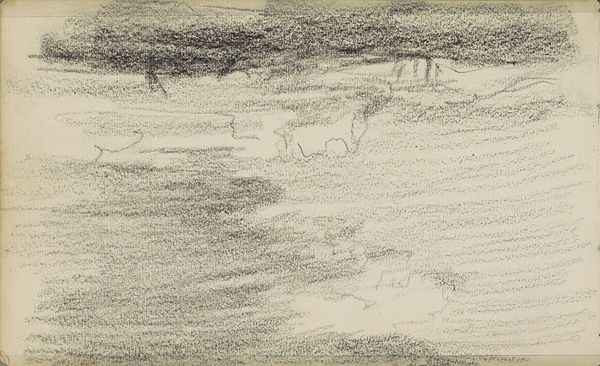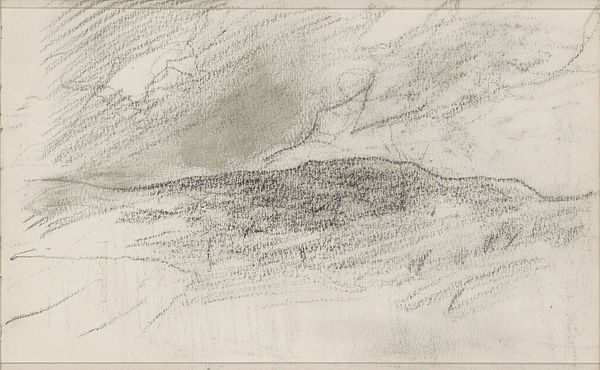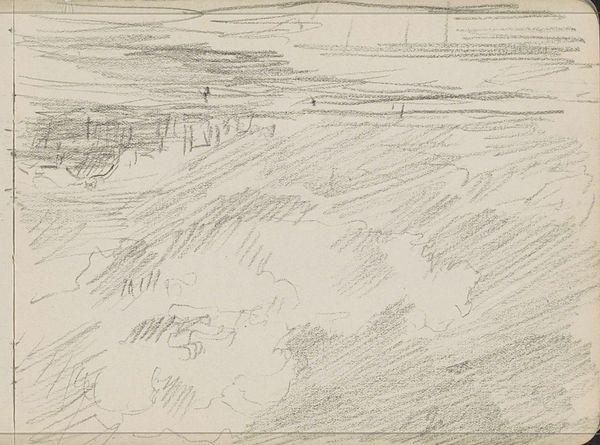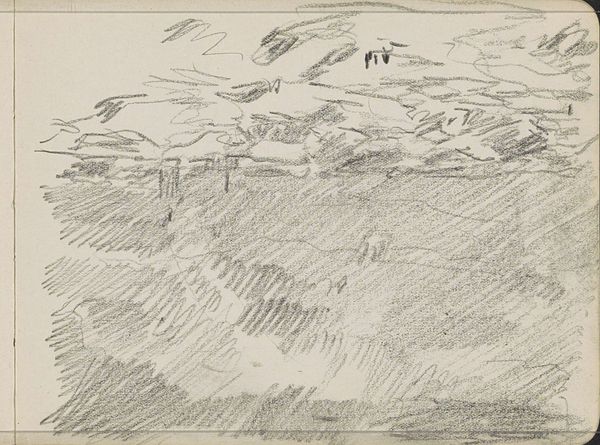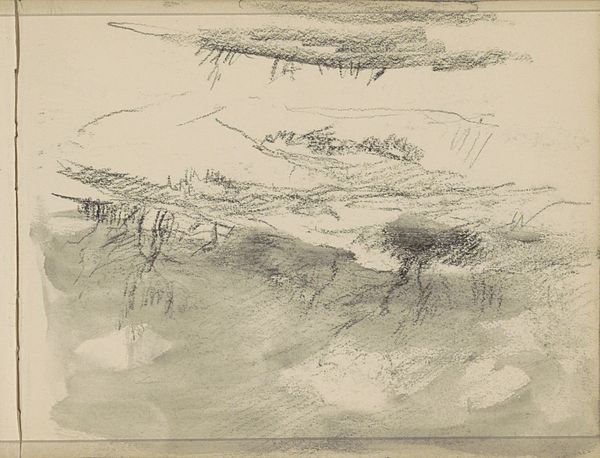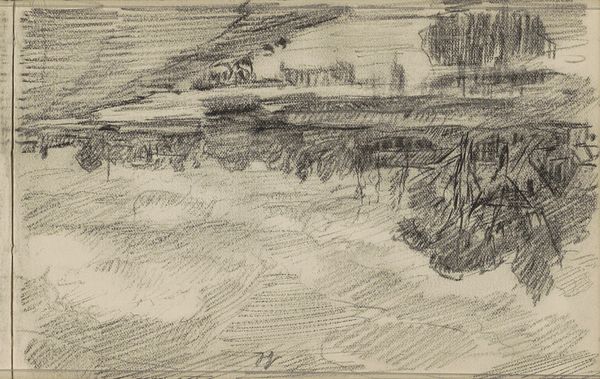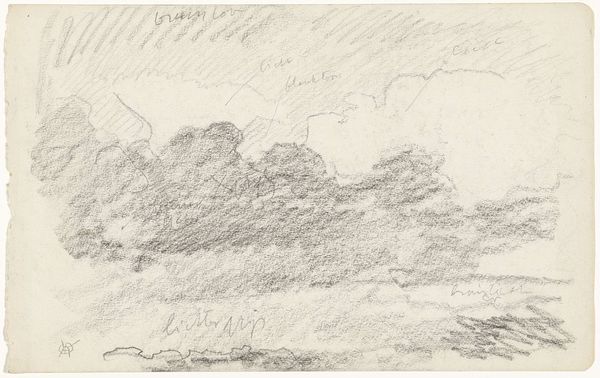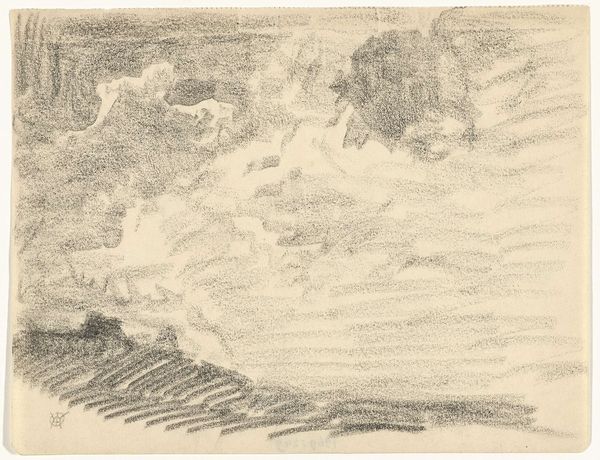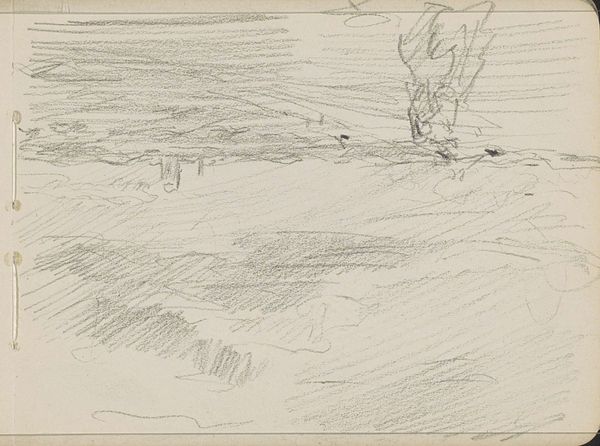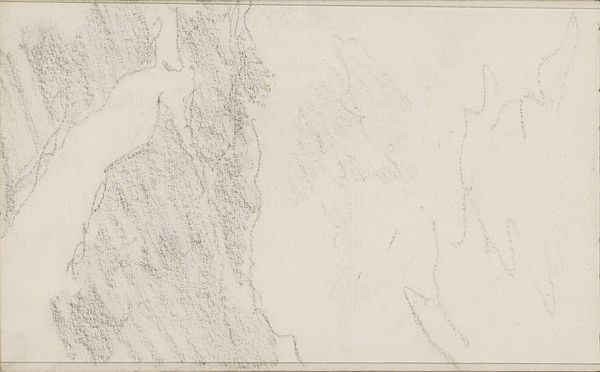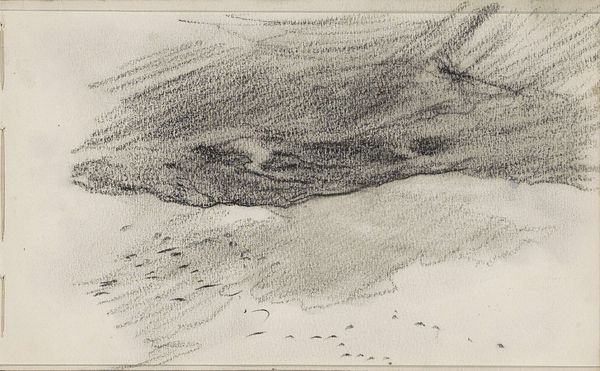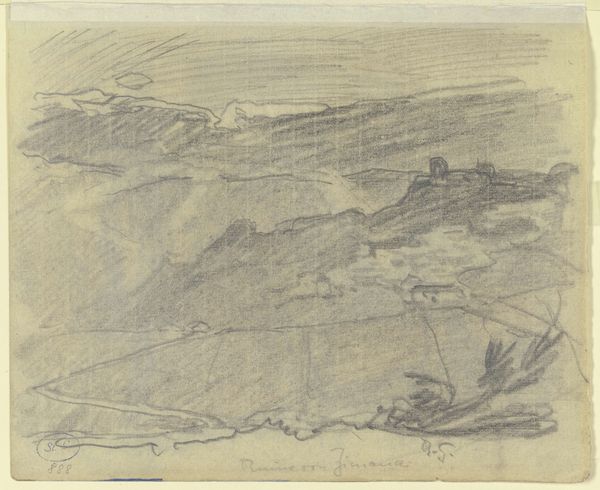
Copyright: Rijks Museum: Open Domain
Curator: Johan Antonie de Jonge’s pencil drawing, “Landschap, mogelijk een kustgezicht”, which translates to “Landscape, possibly a coastal view”, created around 1920, offers a fascinating glimpse into the artist's process. Editor: Immediately striking is its sense of quietude and impermanence. It feels like a fleeting observation captured on paper, very subdued in tone, but the line quality seems so restless, as if trying to find stable footing, however, its values do not seem resolved to me. Curator: Given the probable timeframe of its creation, the piece is a product of the early modern era, in a Europe shaken by conflict. How might its understated nature, rendered using graphite on paper, reflect the post-war disillusionment, particularly within artistic communities grappling with the social and political shifts around them? The work itself presents an identity crisis and seeks an existential conclusion. Editor: Interesting point. Looking at the materials, a simple pencil and paper suggest an economic reality, and the easy accessibility might be relevant too. This wasn't a commission; perhaps just a quick study while traveling by the coast. Curator: The ‘sketch’ style itself opens an intersectional perspective when one views the artwork: how notions of ‘finish’ within landscape relate to a certain political ideology? The lack of colour challenges the established canon, refusing easy visual consumption and thereby creating the means to actively undermine bourgeois expectation. Editor: What I find most captivating is the apparent unfinished quality—a window into the labor, or rather, the implied labor behind creating an image. Each stroke is a testament to physical interaction, even if not developed into some idealized view. Curator: A labor of memory too! How do de Jonge’s material choices underscore his potential alienation from idealized forms of artistic representation, or from larger socio-economic forces structuring artistic production? Editor: Well, this brief conversation sheds light on this drawing's dual nature. Both its apparent simplicity in technique, and its reflection upon broader material conditions provide us a compelling lens through which we may examine the tensions during a pivotal historical moment. Curator: Exactly. By bringing social history, technique, gender, and material accessibility into focus, we hopefully give visitors richer and more critical perspectives on de Jonge's landscape drawing.
Comments
No comments
Be the first to comment and join the conversation on the ultimate creative platform.

